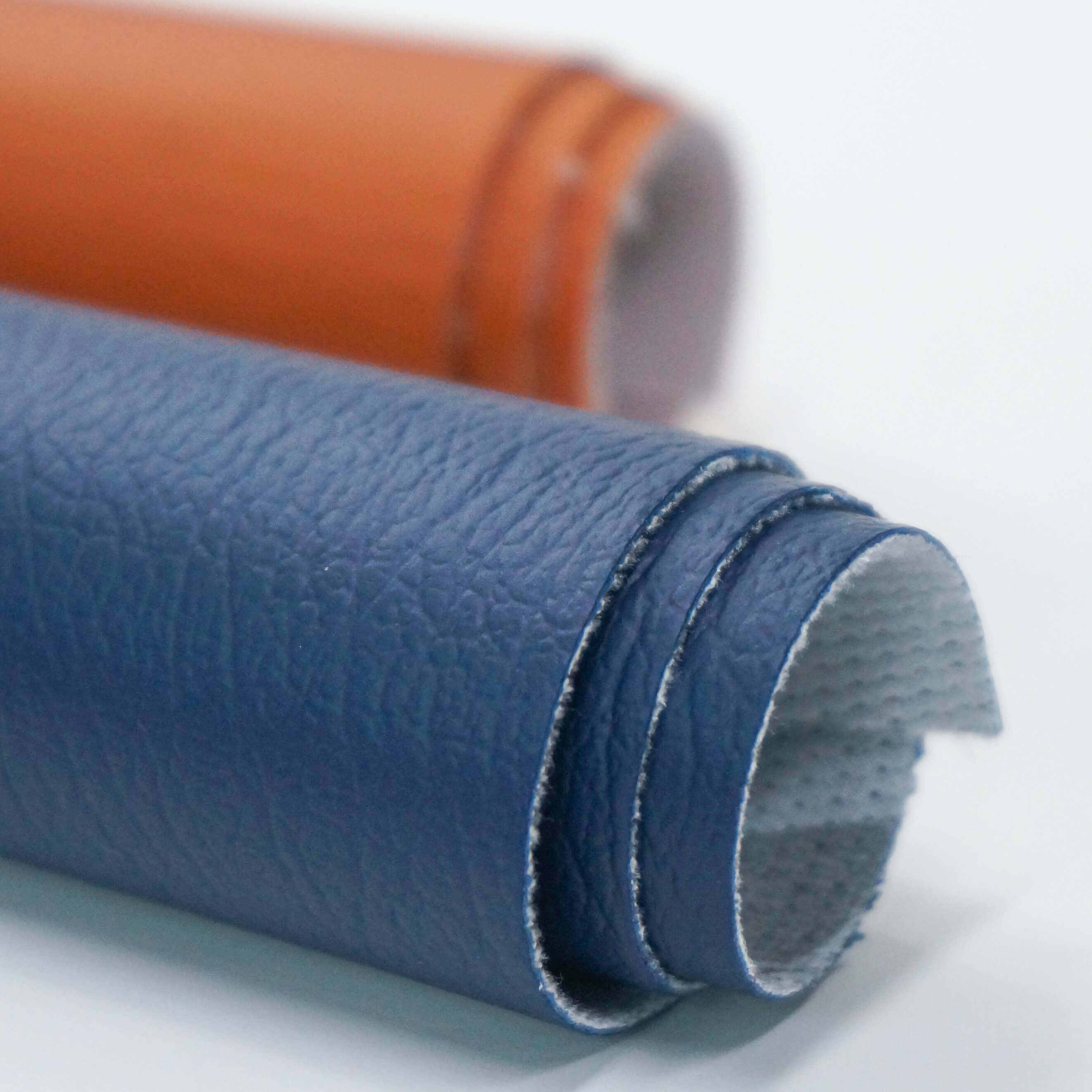Email format error
Email cannot be empty
Email already exists
6-20 characters(letters plus numbers only)
The password is inconsistent
Email format error
Email cannot be empty
Email does not exist
6-20 characters(letters plus numbers only)
The password is inconsistent

News

Microfiber Leather Stocklot for Sofa and Car Seat
1. Introduction to Microfiber Leather
1.1 What is Microfiber Leather?
Microfiber leather, often referred to as synthetic leather or vegan leather, is a high-quality, man-made material designed to mimic the appearance and texture of genuine leather. Made from ultra-fine synthetic fibers, it is known for its softness, durability, and aesthetic appeal. Typically composed of polyester and polyamide, microfiber leather is engineered to offer many of the desirable qualities of traditional leather, such as suppleness and breathability, without the ethical concerns associated with animal products.
One of the key characteristics of microfiber leather is its ability to resist stains and moisture, making it an ideal choice for various applications, particularly in upholstery. As a versatile material, microfiber leather has gained significant popularity in recent years, particularly in the furniture and automotive industries.
1.2 The Manufacturing Process of Microfiber Leather
The production of microfiber leather involves a multi-step process that ensures its unique qualities and performance. Understanding this process helps appreciate why microfiber leather is increasingly favored over traditional leather.
1.2.1 Fiber Production
The manufacturing process begins with the creation of the fibers. Microfiber leather is primarily composed of very fine synthetic fibers, typically made from polyester and polyamide. These fibers are produced through a spinning process that generates ultra-fine threads, which can be as much as 100 times thinner than a human hair. This fine structure contributes to the softness and flexibility of the final product.
1.2.2 Non-Woven Fabric Creation
Once the fibers are produced, they are woven together to create a non-woven fabric. This step is crucial, as it enhances the durability and strength of the material. The fibers are bonded together using heat or adhesives, forming a lightweight yet sturdy fabric that can withstand wear and tear.
1.2.3 Coating and Finishing
After the non-woven fabric is created, it undergoes a coating process that gives it a leather-like appearance and texture. This is achieved through the application of a polyurethane (PU) layer, which adds a smooth surface finish and enhances the material's resistance to stains and moisture. Finally, the fabric is dyed and treated to achieve the desired color and texture.
Quality control is paramount throughout the manufacturing process. Rigorous testing ensures that the microfiber leather meets industry standards for durability, colorfastness, and overall performance.
1.3 Comparison Between Microfiber Leather and Traditional Leather
When comparing microfiber leather to traditional leather, several factors come into play, including durability, cost-effectiveness, maintenance, and environmental impact.
1.3.1 Durability and Longevity
Microfiber leather is often praised for its durability. It is resistant to scratches, fading, and cracking, which can be significant issues with genuine leather over time. While high-quality traditional leather can last for many years with proper care, microfiber leather offers a more resilient alternative that can maintain its appearance even in high-use environments.
1.3.2 Cost-Effectiveness
Cost is another critical factor in the microfiber leather versus traditional leather debate. Microfiber leather is generally more affordable than genuine leather, making it an attractive option for budget-conscious consumers and manufacturers. This cost-effectiveness allows for greater design flexibility, enabling the use of high-quality materials without exceeding budget constraints.
1.3.3 Maintenance and Cleaning
Microfiber leather is easy to maintain, requiring only regular cleaning with a damp cloth to remove dirt and stains. In contrast, traditional leather requires specialized cleaning products and conditioning to maintain its luster and prevent drying out. This low-maintenance characteristic makes microfiber leather a popular choice for busy households and commercial environments.
1.3.4 Environmental Impact
The environmental impact of microfiber leather is a complex topic. While it is a synthetic material, which raises concerns about petrochemical use and waste, many manufacturers are adopting sustainable practices. For instance, some brands produce microfiber leather using recycled materials and environmentally friendly processes, mitigating some of the environmental concerns associated with traditional leather production, which often involves harmful chemicals and significant water usage.

2. Applications of Microfiber Leather
2.1 Use of Microfiber Leather in Furniture
One of the most prominent applications of microfiber leather is in furniture, particularly in sofas and chairs. Its aesthetic appeal, combined with practical benefits, makes it a favored choice among designers and consumers alike.
2.1.1 Sofas
Microfiber leather sofas provide a luxurious appearance while being highly functional. They come in a wide variety of styles, colors, and textures, allowing for seamless integration into different interior design schemes. Additionally, microfiber leather's resistance to stains and spills makes it an ideal option for homes with children and pets.
2.1.2 Chairs
Chairs upholstered in microfiber leather offer a comfortable seating experience, as the material is soft to the touch and breathable. Whether for dining chairs, office chairs, or accent chairs, microfiber leather adds a contemporary and sophisticated touch to any space. Its durability ensures that these chairs can withstand daily use while retaining their visual appeal.
2.1.3 Upholstered Beds
Microfiber leather is also becoming a popular choice for upholstered beds, adding elegance and modernity to bedroom designs. The soft, luxurious texture enhances the overall aesthetic of the room while providing a cozy and inviting atmosphere. Additionally, the ease of maintenance makes microfiber leather a practical choice for bedroom furniture.
2.2 Applications in the Automotive Industry
Microfiber leather has made significant inroads in the automotive sector, particularly for car interiors. Its versatility and durability make it an ideal choice for various automotive applications.
2.2.1 Car Seats
One of the primary uses of microfiber leather in automobiles is for car seats. Many manufacturers are increasingly opting for microfiber leather stocklots for car seat production due to their durability, aesthetic appeal, and comfort. Microfiber leather car seats are resistant to fading, making them suitable for vehicles exposed to sunlight for extended periods.
2.2.2 Dashboard Covers
Microfiber leather is also used for dashboard covers, providing a sleek and modern look while protecting the dashboard from sun damage and wear. This application enhances the overall interior design of the vehicle while adding an additional layer of protection.
2.2.3 Door Panels
Another common application of microfiber leather in automobiles is for door panels. Using microfiber leather in this area adds a touch of elegance to the interior and provides a soft surface that enhances the overall tactile experience for passengers. The material's durability ensures that it can withstand daily wear and tear.
2.3 Other Common Uses of Microfiber Leather
Beyond furniture and automotive applications, microfiber leather is employed in a wide array of products, showcasing its versatility.
2.3.1 Fashion Accessories
Microfiber leather is increasingly popular in the fashion industry for creating handbags, wallets, and belts. Designers appreciate its ability to mimic genuine leather while being more affordable and often more sustainable. The availability of various colors and textures allows for creativity and innovation in fashion design.
2.3.2 Home Decor Items
In addition to furniture, microfiber leather is used in various home decor items, including cushions, throws, and decorative accents. Its luxurious appearance adds a touch of elegance to living spaces, making it a sought-after material for interior decorators and homeowners.
2.3.3 Sporting Goods
Microfiber leather is also utilized in sporting goods, such as gloves and bags. Its durability and comfort make it an excellent choice for equipment that needs to withstand rigorous use. Additionally, microfiber leather's moisture-wicking properties are advantageous for athletic applications.
3. Conclusion
Microfiber leather has emerged as a prominent material in the furniture and automotive industries, offering a range of benefits over traditional leather. Its affordability, durability, ease of maintenance, and versatility make it an attractive choice for various applications, from sofas and car seats to fashion accessories and home decor items.
The availability of microfiber leather stocklots for sofa and car seat production provides manufacturers with a sustainable and cost-effective option, allowing for high-quality designs without the ethical concerns associated with animal leather. As consumer preferences shift towards more sustainable and innovative materials, the future of microfiber leather looks promising, paving the way for continued growth and innovation in the market.
By understanding the benefits and applications of microfiber leather, consumers and manufacturers can make informed choices that align with their values and needs. Whether in the realm of furniture, automotive, or fashion, microfiber leather continues to redefine modern design and functionality.

